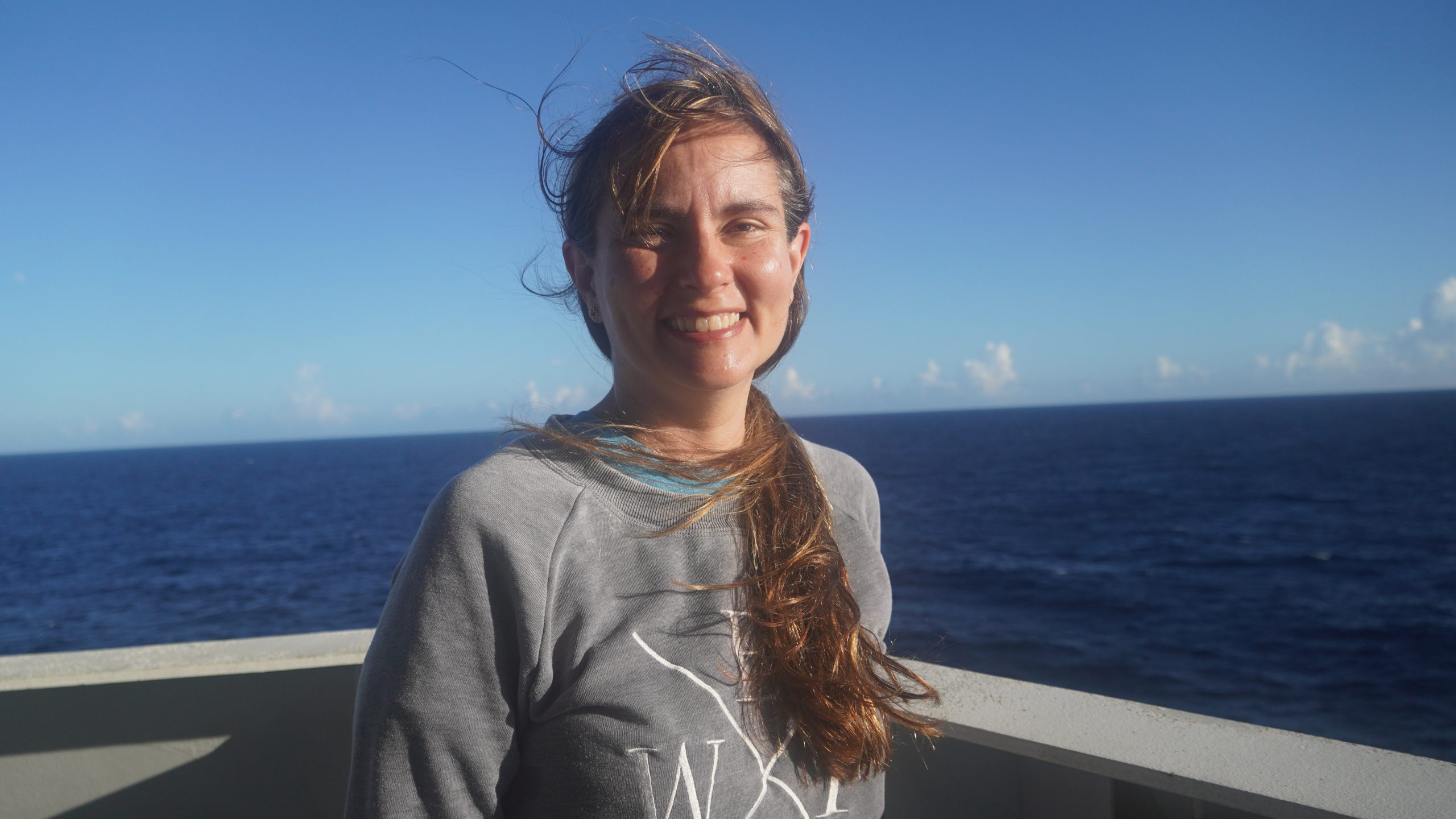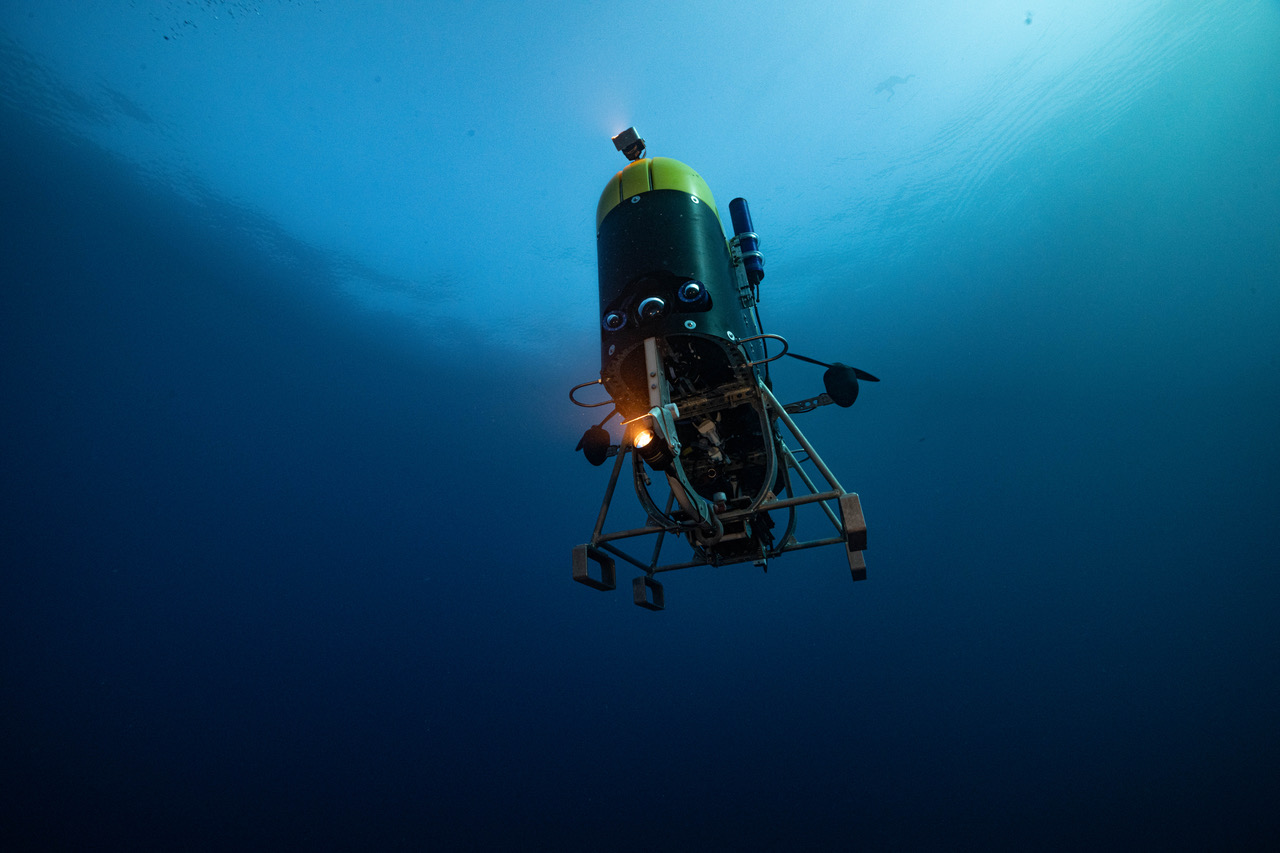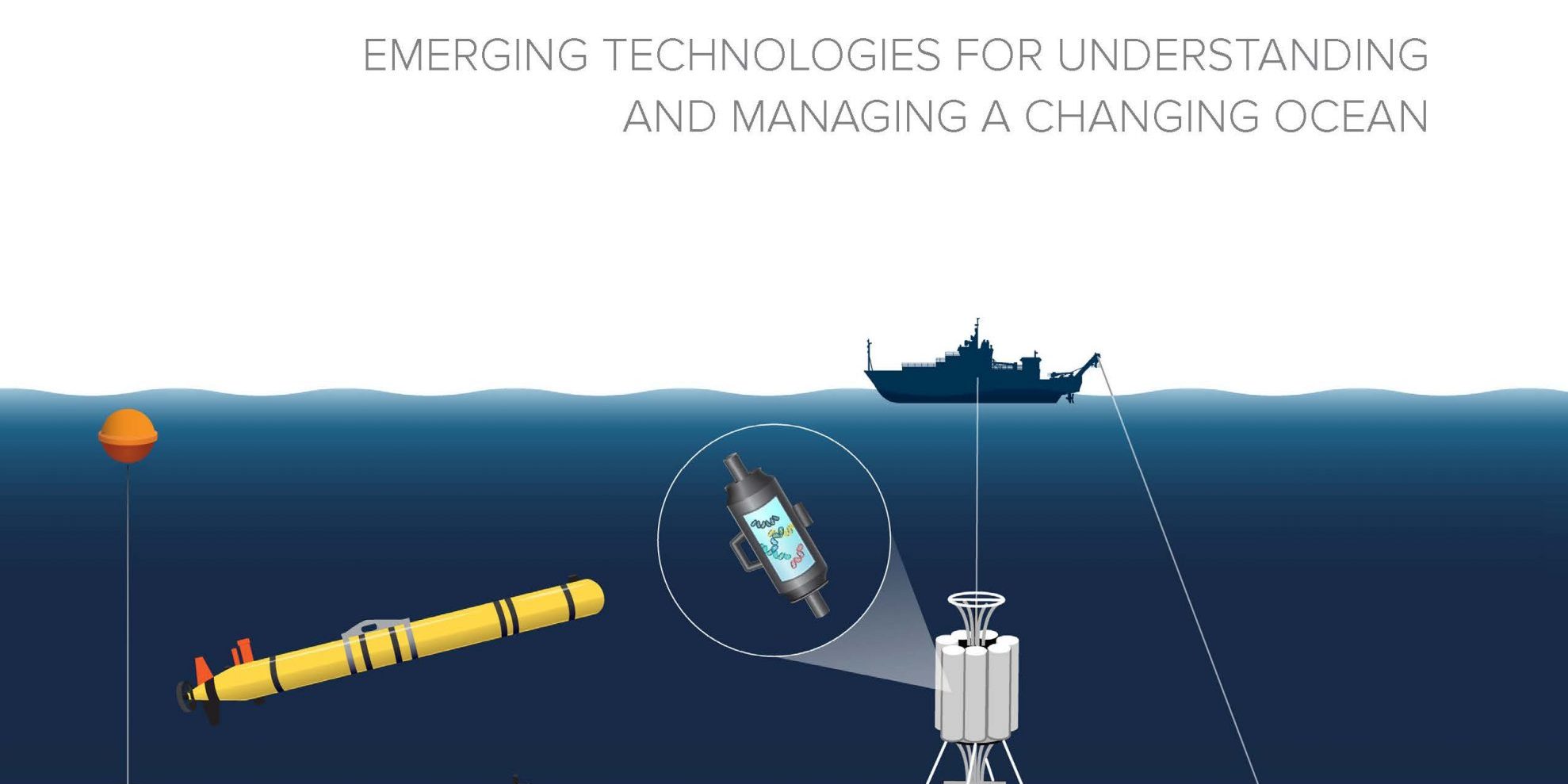eDNA Takes Center Stage April 17, 2023
A new paper by Annette Govindarajan, a molecular ecologist with WHOI's OTZ team, has been featured as the cover story for a special issue of the journal Oceanography. The issue highlights emerging technologies in ocean science—from hazard warning systems to pollution detection—and puts an emphasis on new ways of using environmental DNA (eDNA) as a tool for understanding marine biodiversity.
eDNA exists everywhere in the world’s oceans where there is life. As marine animals swim, eat, and defecate, they shed tiny clusters of cells and genetic material into the water, leaving telltale signs of their presence. Even if researchers never actually see the animals firsthand, that genetic material makes it possible to identify the species that exist in a particular habitat, providing valuable information about its distribution, behavior, and role in food webs, Govindarajan says.

For the past decade, eDNA has primarily been used by biologists to study shallow near-shore and freshwater habitats, but Govindarajan and her lab are developing ways to use the technique in deeper ocean waters. In doing so, they’re chipping away at some of the mysteries of the murky ocean twilight zone, where migrating animal life helps to shuttle carbon between the surface and the deep.
“It’s a fantastic tool for that kind of environment,” she says. “Some twilight zone species are fast enough to avoid net tows, so they’re really hard to study. Others are fragile, and will be destroyed when they’re caught. With eDNA, we can account for animals that other sampling methods miss.”
In addition to serving as a guest editor of the new issue, Govindarajan is lead author on a review article that appears in the journal. It covers not only the potential of eDNA techniques for deep-ocean research, but also discusses some of the complexities that scientists need to consider when using the technique.
Identifying which organisms are represented in a sample of eDNA, for instance, isn’t always easy. Animal populations aren't evenly distributed throughout the ocean, meaning that concentrations of eDNA may change from place to place. In addition, some species shed more genetic material than others, and the material that does make it into the water can decay at different rates.
Govindarajan's lab has looked at different ways to interpret eDNA results and to make sampling efforts more effective. One example is the work of Eily Allen, a postdoc who is now at the University of Washington. Allen led a modeling study with marine physicist Gordon Zhang (WHOI) and Govindarajan to determine where eDNA goes once it has been shed by an animal, and ultimately found that it stays relatively close to the depth where it first entered the water. The model’s findings are consistent with patterns observed in Govindarajan’s field data.
Govindarajan also collaborated with engineers Allan Adams (Oceanic Labs) and Dana Yoerger (WHOI) to develop a sampler that can pump large amounts of seawater through its filters in situ to ensure that a viable amount of eDNA is collected. “Filtering large volumes of seawater is really important, because marine animals and their eDNA are not distributed evenly. The signal becomes diluted in deeper waters, so you might have to pump, say 30 liters or more through a filter to get the same amount of DNA that you could collect with just a few liters at the surface,” she notes. “We’ve found that we can detect more animal taxa when we filter more water.”

Using automated samplers on diverse platforms—like the OTZ team's Mesobot, which has already deployed the sampler successfully multiple times—will be particularly useful in the future, she adds. With these tools, researchers will be able to use data from other sensors that the platforms carry, providing more environmental context to the eDNA they collect. Govindarajan has already been taking advantage of these sorts of devices: by deploying her eDNA sampler on the towed broadband acoustic instrument Deep-See, she was able to trigger the sampler in real time when a sonar screen indicated that the instrument was in a biomass layer.
Ultimately, Govindarajan hopes that eDNA sampling will become standard on oceanographic instrumentation—something that scientists collect routinely. She envisions greatly expanding the spatial and temporal scales of eDNA collections, placing samplers on diverse underwater vehicles and scientific moorings.
“An additional benefit of sampling is that the eDNA can be archived for later use. It’s a form of documentation for the future—years from now, you could revisit the samples to extract new data or apply new methods,” she says. “Looking forward, the knowledge gained from eDNA-based biodiversity studies will be really important for determining how oceans are changing along with the global climate.”







